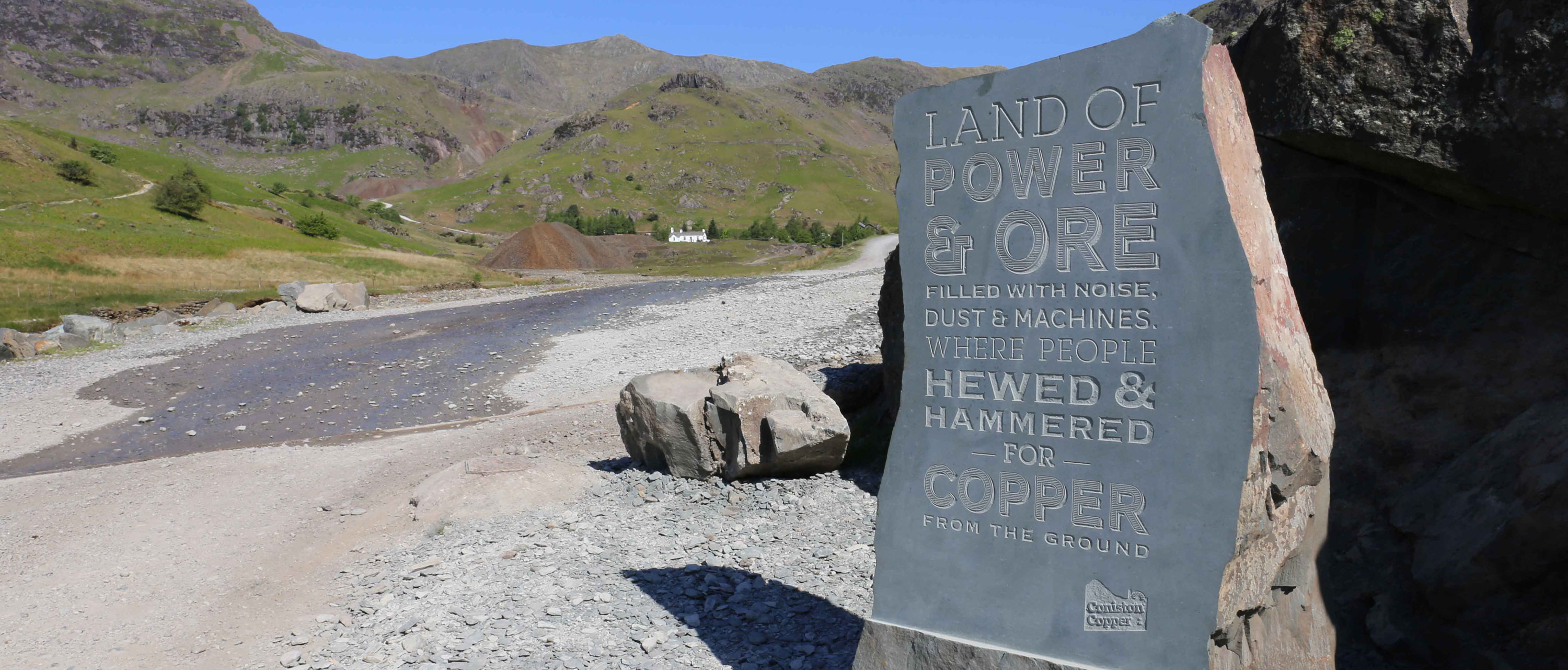Write Track - Welcome Words
The following article is reprinted from the Interpretation Journal of the Association for Heritage Interpretation (AHI), Volume 28, Issue 1, 2023. AHI is the professional body for in Britain and Ireland for those involved in engaging people with cultural heritage, nature and science. It promotes best practice, hosts an annual conference and holds the biennial Engaging People Awards. Guild Companion Bill Bevan is the Journal’s Editor and a Fellow of AHI. This is from his regular feature where he discusses and provides advice on interpretive writing.

The welcome to Coppermines Valley, Lake District National Park, is placed where the industrial landscape is revealed after a walk from Coniston village. It evokes the mining past in 21 carefully chosen key words that link landscape, human activity, sensory triggers and industry. Photo courtesy of inHeritage/Minerva Heritage/The Way Design
WRITE TRACK, WELCOME WORDS
Rethinking what you say when you welcome visitors may have more meaningful impact than the traditional welcome panel.
Welcome and orientation panels and signs for outdoor properties, recreational trails, exhibition galleries or rooms in an historic property are an important part of interpretation. They are often the first opportunity we have to introduce visitors to what they will experience, and provide navigation. Common content includes a title or property name, 100 or more words, an image and a map. A lot of thought goes into what is included on a welcome panel and, sometimes, they can become information heavy.
I have been experimenting with creating a welcome that focuses on the core idea – or interpretive theme – we want people to engage with during a visit. I feel that this serves two aims. It sets up visitors to imagine, feel and be receptive to the objects, places or stories they will encounter as they explore. It also aims to plant the memorable seed that visitors take away with them so that, if asked, they can say that the place or exhibition they visited was about x, y or z.
An example is the welcome sign at Coppermines Valley in the Lake District, a popular hiking location. Most walkers bring their own maps; the trailhead at the bottom of the fell has wayfinding and visitor information; an interpretive hub further along the footpath introduces the mining story with more signposting to specific places to explore.
This approach is not suitable for everywhere, especially larger properties that are more complex for visitors to navigate around or have numerous points of interest. However, I encourage you to experiment with this approach where you feel it will work and differentiate this sort of welcome from the more usual orientation, if you can.
Bill Bevan
Editor, AHI Interpretation Journal


